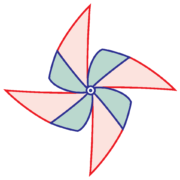Ideas for Blow By Oxygen

Ideas for blow by oxygen are being developed primarily to help individuals with pulmonary hypertension who are not able to use devices that are fastened directly on the patient’s face. Many children and individuals with delayed development are unable to keep a nasal cannula, face mask, or face tent in place during the day or while they are sleeping.
The United States Food and Drug Administration is responsible for protecting the public health by assuring the safety, efficacy and security of human and veterinary drugs, biological products, medical devices, foods, cosmetics, and products that emit radiation. Thus, new devices for the delivery of oxygen to patients with pulmonary hypertension need to be reviewed and approved by the FDA before they can be distributed for patient use. However, the FDA does not regulate the practice of medicine. Thus, patients and parents of patients with pulmonary hypertension may use FDA-approved devices for oxygen delivery in a manner that therapy is less annoying and used more consistently. For example, a child might not be willing to keep a face tent under his chin and strapped around the back of the head. However, a face tent could be fastened to the collar of a vest. Thereby, the oxygen would blow up over the face without the device or straps directly touching the patient.
The Blow By Oxygen Foundation is currently developing several options for oxygen delivery to patients with pulmonary hypertension. The following link provides some introductory information about our oxygen hoodie device (oxygen ho:odieTM) and our cap device (o:oreoTM). The oxygen ho:odie directs the flow of oxygen through tubing with multiple holes pointing toward the nose and mouth. The o:oreo device slides over the brim of a cap or visor and directs the flow of oxygen through multiple holes pointing toward the nose and mouth.
https://drive.google.com/file/d/1EY-9mEzfOhjwbcIdiLJqDRmqBy9AAsve/view?usp=sharing
The Blow By Oxygen Foundation also provides a forum for individuals and families to share ways they have used FDA approved-devices or oxygen tubing alone to enrich the amount of oxygen they or their child breathes. Some of these methods include the use of tents, canopies, car seat covers, or attachments to clothing.
Using a Car Seat Cover to Enrich the Amount of Oxygen Your Baby or Young Child Breathes
A cover can be placed over a car seat to increase the amount of oxygen an infant or young child might breathe. The figures below demonstrate how this might be done.
- An oxygen concentrator can deliver an increased amount of oxygen (approximately 85%).
- The amount of oxygen is approximately 21% in room air.
- The amount of oxygen near the baby’s face increases to approximately 30% when oxygen was delivered through the top of the cover at a flow of 3 liters per minute.
- The amount of oxygen near the baby’s face increases to approximately 35% when oxygen was delivered through the top of the cover at a flow of 5 liters per minute.
- The amount of oxygen near the baby’s face increases to approximately 38% when oxygen was delivered through the top of the cover at a flow of 10 liters per minute.
Some portable oxygen concentrators can deliver a flow of 3-5 liters per minute. Some home oxygen concentrators deliver a flow of 5-10 liters per minute.






